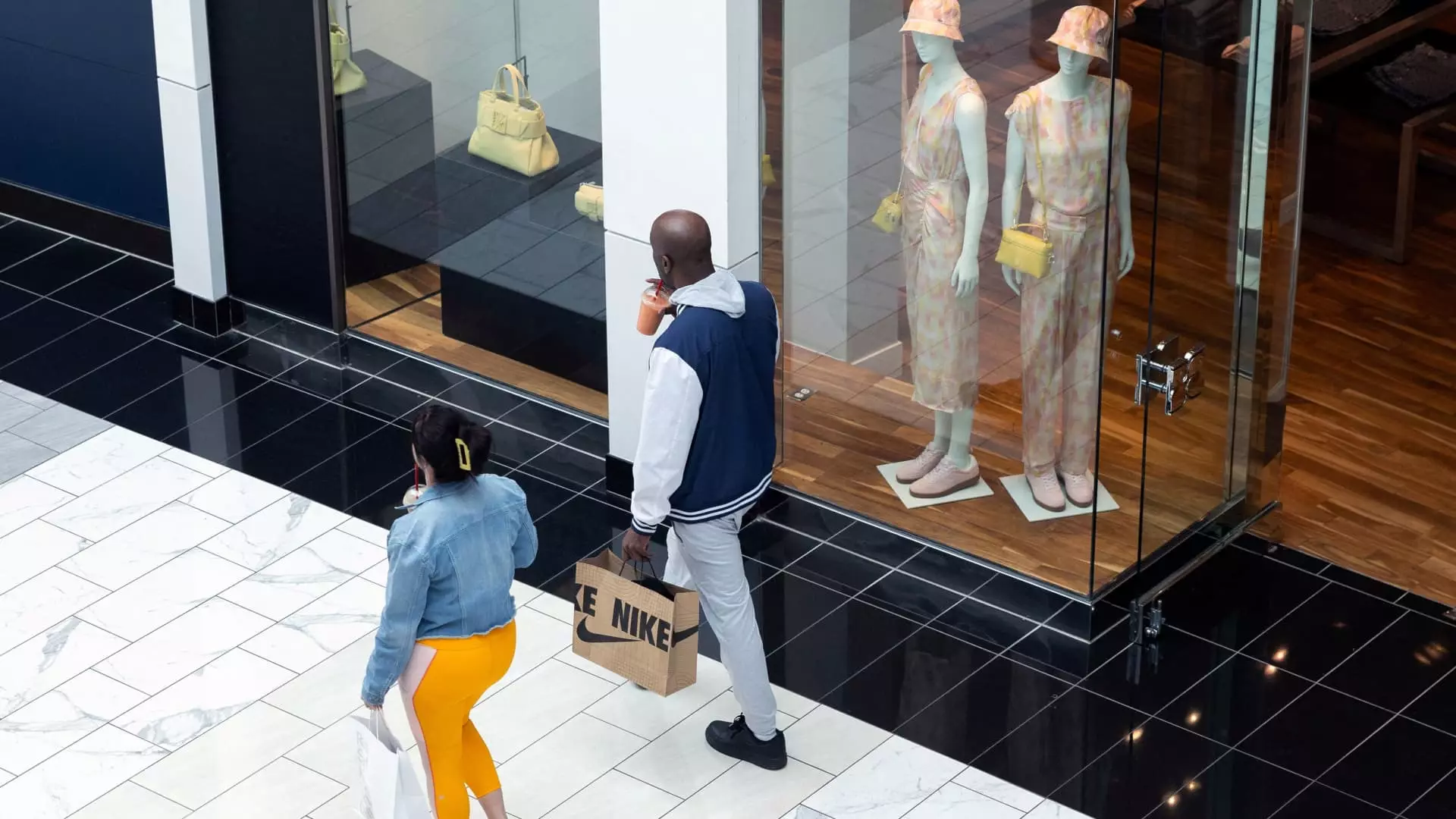In what can only be described as a perilous economic climate, recent surveys reveal that a staggering 73% of American adults report feeling “financially stressed.” This sentiment doesn’t come from mere speculation; it is rooted in concrete factors like tariff wars, fluctuating market conditions, and unpredictable inflation. Yet despite this palpable anxiety, consumer spending remains surprisingly robust. This paradox raises an alarm bell for those paying attention: is the economy’s apparent resilience a ticking time bomb?
The dissonance between financial stress and spending habits indicates a deeper systemic issue. Americans are caught in a paradox of panic buying, driven by fear of impending tariffs, displaying a behavior that is almost instinctual. Instead of bracing for a downturn by tightening their wallets, consumers are inadvertently fueling economic activity, all the while heaping additional pressure on themselves. While the government characterizes this spending as a sign of economic strength, closer scrutiny suggests it may actually be a mirage—an unsustainable facade built on financial anxiety.
Tariffs and Their Unsettling Ripple Effects
The role of tariffs in this economic turbulence cannot be overstated. Federal Reserve Chair Jerome Powell has voiced concerns about the implications of President Trump’s trade policies, arguing that they would inevitably lead to higher inflation and diminished growth. Recent numbers seem to validate Powell’s apprehensions. For instance, J.P. Morgan recently elevated the likelihood of a U.S. recession by year-end to 60%. This figure is not just a statistic; it reflects an undercurrent of fear that is increasingly seeping into consumer sentiment.
The Conference Board’s expectations index plunged to a twelve-year low, clearly indicating how tariffs cause consumers to reconsider their financial futures. Even as businesses and banks tout figures showing a surge in consumer spending, it’s essential to recognize that this same spending could be the precursor to an economic downturn. This contradiction begs the question: is this vigorous consumer spending merely a delay tactic before a inevitable fall?
The Psychology of Spending: Understanding Consumer Behavior
Sasha Indarte, an assistant professor at the Wharton School of the University of Pennsylvania, articulately outlines how behavior plays a crucial role in spending patterns. Humans are creatures of habit, and despite shifting economic tides, many continue to engage in their usual spending behaviors. This “preference for sameness” poses significant risks. As financial constraints tighten, consumers may not curtail their spending as expected even when they believe they should.
This behavioral inertia has profound implications. According to Indarte, when one person’s spending dwindles, it reverberates through the economy as income for another—creating a ripple effect that can amplify even minor downturns. The projected outcome? A self-fulfilling prophecy where declining consumer confidence exacerbates economic stagnation. The reality is alarming: households may face a crisis where their financial habits no longer align with their economic realities, leading to a significant drop-off in overall spending, regardless of intent.
Inflationary Pressures and Household Budgets
Experts like Greg McBride from Bankrate stress that inflation remains central to how households manage their finances. With projections indicating an average loss of real income by as much as $3,800 per year, it is no wonder that households feel the pressure. Financial stress is thus not merely a theoretical concern; it’s tangible and urgent, requiring immediate attention.
Household budgets are particularly sensitive to price increases; thus, inflation will continue to skew consumer sentiment, rendering them more hesitant to spend. However, in this precarious economic environment, pushing spending limits could trigger a tipping point. When consumers are unable to sustain the lifestyles they have become accustomed to, the repercussions could be dire—not just for individual households but for the economy at large.
Confronting the Storm Ahead
What looms ahead is a convergence of fiscal pressures—tariffs, inflation, and consumer sentiment—that has the potential to lead America into troubling waters. As fears mount and spending behaviors worsen, we may find ourselves at a crossroads. The economic tide could turn swiftly, and what appears resilient may very well be fragile.
The fact that financially burdened Americans are still hanging on to their spending habits isn’t a harbinger of health for the economy. It’s a precariously balanced act awaiting the slightest nudge to send it tumbling into recession. The economic resilience we perceive may in fact be a façade concealing a broader vulnerability—a reality that shoppers, business leaders, and policymakers can ill afford to ignore.

